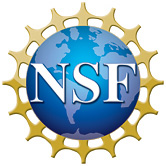Applications Activity: "Smart" Papers
| View full, printable version of this activity |
Audience: Middle school class
Time Needed: 50 minutes
Objectives:
- Introduce microencapsulation technology, used in "smart" paper
- Understand different methods to break microcapsules: heat, pressure and dissolution
- Learn the mechanics of how "smart" paper uses invisible ink
- Realize that "smart" paper is widely used in every day life, employing common examples such as tickets and receipts.
Activity Description:
One of the goals of the activity is to help students learn how to recognize 'smart paper' in their daily lives and help students recognize hidden technologies embedded in simple things. Students will be guided through hands on interaction with carbonless and thermal paper.
Concepts that are introduced in the activity are the function and use of microcapsules, accomplished by drawing analogies to larger capsules: medicines, paint balls, M&M's etc. We'll show and discuss different ways to break capsules (heat, pressure, and dissolution). We will brainstorm uses for capsules and how they are applied to and specially designed for use in "smart paper".
The topic of chemical reactions is also presented, with an emphasis on the reaction that occurs when the microcapsules rupture and subsequently develop color. Each student will conduct a safe experiment, under supervision, that evolves color from an invisible ink. The experiment stresses the connection to the smart papers discussed.
Activity Materials:
- Carbonless copy paper (enough for each student to have a ~2" x 2" square)
- Pen/pencil
- Lemon juice and small container to hold lemon juice
- Absorbent paper (hand made paper is best, water color paper also works well) (enough for each student to have an ~2" x 2" square
- Cotton swabs (one per student)
- Newspaper or trays (to protect work space)
- Thermal paper (enough for each student to have an ~2" x 2" square)
- Heat source (iron or toaster)
- Bath beads (several, if splatter box is being utilized)
- Paintballs (several, if splatter box is being utilized)
- Paintball "splatter box" and weights (or Bubble wrap can be used to illustrate the same concepts)
- Red cabbage juice
- Spray bottle
- Computer paper
- Examples of thermal paper (receipts, airline tickets, concert tickets, lottery tickets)
Supplemental Materials:
- Teacher's Guide: Materials and where to find them (pdf)
- Teacher's Guide: Extended Activity Instructions (pdf)
- Handout: Worksheet (pdf)
-
Intructions for making red cabbage juice(from the Miami Museum of Science website - http://www.miamisci.org/ph/phcabbage.html)
Chop a red cabbage into many small pieces. Boil the cabbage in enough water to cover the pieces, until the water becomes almost bluish, or a very deep purple. Cool the water before putting it into the spray bottle. Cabbage juice must be kept refrigerated when not in use.



